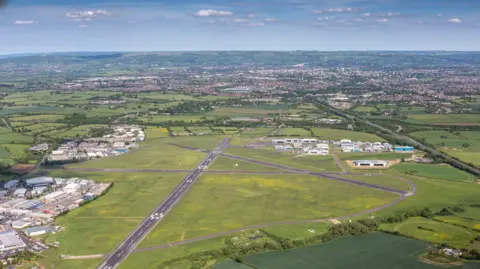Plans to 'merge' districts could create 140k homes
 Getty Images
Getty ImagesA leaked council document reveals plans to build 142,400 new homes that could effectively 'merge' Gloucester and Cheltenham.
Gloucestershire County Council's long-term growth strategy suggests the creation of new garden towns in places such as Boddington, Standish, Kemble and Aylburton.
Shire Hall bosses have been developing the strategy since 2020 but this is the first time the blueprint has been revealed, according to the Local Democracy Reporting Service (LDRS).
The draft also proposes removing the green belt north of the A40 between Cheltenham and Gloucester.
This is under a land-use designation policy used to retain areas of largely undeveloped or agricultural land.
 GCC
GCCDistricts such as Cotswold and Tewkesbury would see the largest increase in housing, with upper estimates of 36,270 and 31,110 homes each, according to the plans.
Stroud and the Forest of Dean are expected to provide 23,580 and 18,240 new houses by 2051.
And 17,340 and 15,840 homes are expected to be built in Gloucester and Cheltenham respectively by that year.
 GCC
GCCThe map for the joint strategic plan for Cheltenham, Gloucester and Tewkesbury includes the already-planned garden town at Ashchurch, but reveals major plans for a new garden town at Boddington.
This would have 32,000 homes by 2051, according to the council’s upper estimates, and would require the removal of the existing green belt.
As a result, it will facilitate the 'merging' of Cheltenham and Gloucester.
Stroud District is required to provide around 20% of the county’s new homes by 2051 – a total of 19,000 new homes.
The creation of a garden town at Standish, which would be served by a new railway station north of Stonehouse on the Bristol to Birmingham mainline, could facilitate up to 14,200 new homes by 2051.
Similarly, the Cotswold district will see up to 36,300 new homes built following the introduction of two new garden towns.
One in Moreton-in-Marsh and another in Kemble will link Cirencester to the village’s railway station.
The County Council expects the scale of growth between these two settlements will facilitate improved mass transport and walking and cycling links.
The authority estimates there will be 23,000 new homes in Kemble by 2051.
